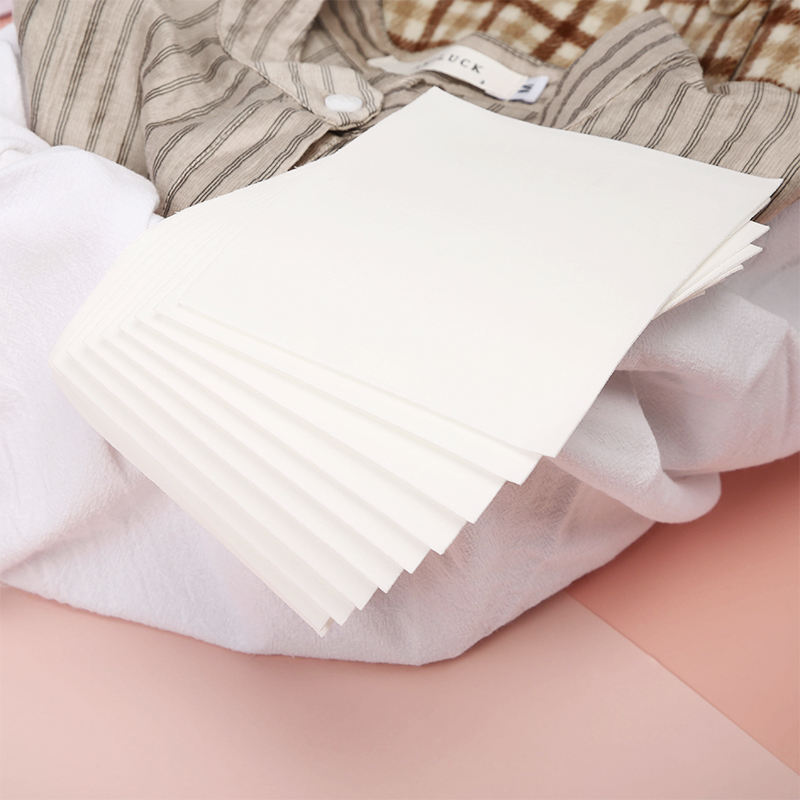Why We Don’t Use Phosphates (And You Shouldn’t Either)
When you do your laundry, you probably don’t think too much about what’s inside your detergent. After all, as long as your clothes come out clean, what’s the big deal?
Well, there’s one ingredient that used to be common in many laundry products—but is now banned or restricted in countries around the world. That ingredient is phosphates.
At first glance, phosphates may sound harmless. But the truth is, they’ve had a major impact on our environment, especially our rivers, lakes, and oceans. That’s why we’ve chosen not to use phosphates in our laundry detergent sheets—and why we think you shouldn’t either.
In this blog, we’ll explain:
-
What phosphates are
-
Why they were used in laundry products
-
What harm they cause
-
And why phosphate-free laundry is better for you and the planet
1. What Are Phosphates?
Phosphates are chemical compounds that contain phosphorus, an essential nutrient for plants and animals. They are commonly used in:
-
Fertilizers (to help crops grow)
-
Food additives (as preservatives)
-
Cleaning products (especially dishwashing and laundry detergents)
In laundry detergents, phosphates were once popular because they:
-
Soften hard water
-
Help detergents work more effectively
-
Break down dirt and stains
Sounds great, right? Unfortunately, they come with a heavy cost.
2. What’s the Problem with Phosphates?
The main issue with phosphates happens after you do your laundry.
When you wash your clothes, any leftover detergent goes down the drain and into local wastewater systems. While most of the detergent is treated at water plants, phosphates often slip through and end up in lakes, rivers, and oceans.
Once in nature, they act as fertilizer—just like they do on farms. And that’s where the problems begin.
🧪 The Result: Water Pollution and Algal Blooms
Phosphates fuel the rapid growth of algae in water—a process called eutrophication. These algae blooms:
-
Block sunlight from reaching other aquatic plants
-
Use up oxygen in the water
-
Create “dead zones” where fish and other aquatic life can’t survive
-
Make water unsafe for swimming or drinking
-
Create foul odors and unattractive green scum
One of the most famous examples is the Great Lakes in North America, where phosphate pollution led to massive ecological problems.
3. Why Were Phosphates Allowed for So Long?
For decades, phosphates were widely used because they were cheap and effective. Many manufacturers didn’t think much about their environmental impact.
But by the 1970s and 1980s, scientists began to link phosphate use to major environmental damage. This led to:
-
Widespread bans in dishwashing and laundry detergents in countries like the U.S., Canada, and the EU
-
New formulations that replaced phosphates with safer, biodegradable alternatives
Despite these changes, some products around the world still contain phosphates, especially in countries with fewer regulations. That’s why it’s important to read the label and choose brands that commit to phosphate-free formulas.
4. Phosphate-Free Laundry Sheets: A Better Solution
Our concentrated laundry detergent sheets are 100% phosphate-free, and here’s why:
✅ Better for the Environment
-
No contribution to algal blooms
-
Safe for aquatic ecosystems
-
Biodegradable and low-impact
✅ Safe for You and Your Family
-
Gentle on sensitive skin
-
No harsh chemicals or residues
-
Ideal for homes with septic systems
✅ Effective Cleaning Without Compromise
Thanks to enzymes, plant-based surfactants, and advanced formulation, our sheets clean just as well—if not better—than old-school detergents, but with none of the environmental harm.
5. What We Use Instead
Instead of phosphates, modern laundry sheets use:
-
Enzymes – natural proteins that break down stains
-
Chelating agents – bind minerals in hard water (without pollution)
-
Plant-based surfactants – lift dirt and oil from fabric
-
Natural fragrances or fragrance-free formulas
These ingredients are biodegradable, gentle, and effective—proving you don’t need phosphates to get clean clothes.
6. How to Spot Phosphates on a Label
If you’re trying to avoid phosphates in your laundry products, check for the following on the ingredient list:
-
Sodium tripolyphosphate (STPP)
-
Sodium phosphate
-
Phosphoric acid
-
Phosphate-based water softeners
Also, look for labels or certifications such as:
-
“Phosphate-Free”
-
USDA BioPreferred
-
EPA Safer Choice
-
EcoCert / EWG Verified
Brands that care about sustainability will proudly state that they avoid harmful ingredients.
7. Phosphates: A Global Issue
Even though many countries have banned or restricted phosphates in household detergents, they’re still used in industrial cleaning, agriculture, and developing markets.
That’s why every purchase you make sends a message. By choosing phosphate-free products, you:
-
Support cleaner waterways
-
Encourage responsible manufacturing
-
Help build demand for safer, eco-friendly cleaning solutions
8. It’s Not Just About Clean Clothes—It’s About a Clean Planet
Choosing laundry sheets without phosphates may feel like a small step, but the ripple effects are huge.
Imagine if every household switched to phosphate-free detergent:
-
We’d save thousands of aquatic ecosystems
-
Reduce greenhouse gas emissions from wastewater treatment
-
Protect fish, birds, and other wildlife
-
Create a healthier world for future generations
Conclusion
Phosphates might help clean your clothes, but they pollute the planet in the process. Luckily, with today’s technology, we no longer need to make that trade-off.
We’re proud to say our laundry detergent sheets are completely phosphate-free. They clean powerfully, protect your fabrics, and keep our rivers, lakes, and oceans safe.
You shouldn’t have to choose between a clean shirt and a clean Earth.
With phosphate-free laundry sheets—you get both.





